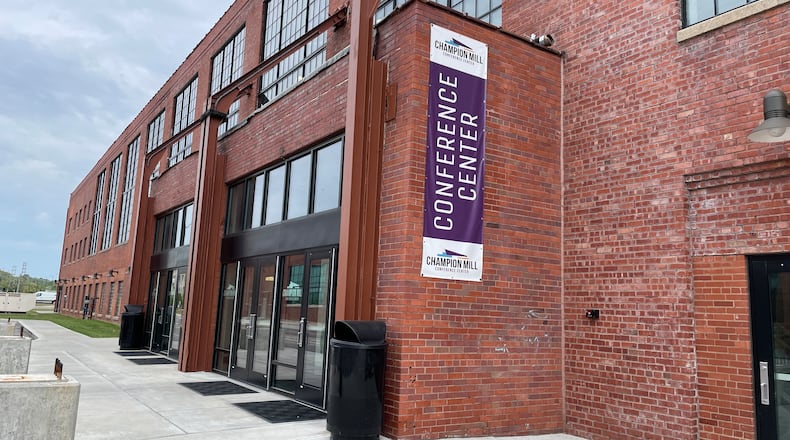After the Ohio Historical Preservation Office gave its bureaucratic thumbs up in March 2020, construction began on Mill 2, which is the hotel and convention center side of the 1.2 million-square-foot redevelopment. That project included the installation of two canopies, one in front of the hotel entrance and one in front of the convention center entrance.
However, the National Park Service, which oversees the federal historic tax credit program, said those canopies had to come down despite the state preservation office saying it was okay. Beiler said they only proceeded because they wouldn’t normally hear from the National Park Service with a formal go-ahead letter.
“When SHPO gave its approvals in 2020, we just went ahead, and what was drawn was built. The canopies were on the drawings,” he said. “When we heard park service had remediation they required, we talked about it for a while with them, but there was no real discussion. The decision had been made; they needed to come down.”
In Ohio’s letter to the National Park Service, they explained that “[w]hile the canopies are new elements, in the case of this project with a main elevation that stretches the equivalent of 2-3 city blocks, the historic character of the elevation remains clearly evident and while the building’s appearance is affected, the appearance is neither diminished nor compromised by the two new additions.”
The National Park Service disagreed and issued a denial of Spooky Nook’s Request for Certification of Completed Work.
They also disagreed with Ohio’s approval of a few other — and minor in comparison — issues, like some interior black window frames should be silver. The Journal-News spoke with multiple people familiar with the historic tax credit process, and this appears to be the first time the state and federal systems disagreed on a project in Ohio.
Ohio Sen. George Lang, R-West Chester Twp., became involved in the process and said he was more than irritated by the National Park Service’s remediation order. He said the whole point of the historic tax credits is to be an economic development tool in order to save a community’s historic buildings for renewed economic use. But instead, it’s become a focus on design standards.
The canopies were 7% of the face of the building.
“When they got me involved, we were able to get the state to send a favorable report to the National Park Service,” Lang said. “But what the federal government has done here is an absolute disaster. That canopy had zero impact on the historical integrity of the building.”
The state senator said he doesn’t believe the former Champion Mill paper plant could have been used for anything but what Spooky Nook has built, and is continuing to build as it’s not yet completed. He believed the buildings would have eventually been razed.
Beiler hopes this is just a temporary setback as he believes the canopies will be reinstalled following the appeals process. Spooky Nook plans to file the appeal in October, at the earliest, so it can get the canopies reinstalled, which technically weren’t attached. Beiler said they had their own support system in the ground and not structurally attached to the building. There was foam that filled the gaps between the building’s facade and the canopies.
The National Parks Service has 30 days to respond to the appeal, but if Spooky Nook needs to answer a question from the federal office, that 30-day clock is reset.
“We’ll do everything we can conversationally before we submit the appeal, we need to make sure we’re answering any questions they might have,” said Beiler, the primary reason they’re waiting to file the appeal. “But it’s a process we don’t control. Nobody in Hamilton controls. Nobody at the state level controls. You just have to walk through the labyrinth.”
There is a Plan B, which is not an ideal solution, Beiler said, but they can erect temporary structures during times of inclement weather or for other reasons deemed necessary.
About the Author


